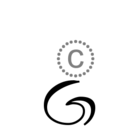Ja (Javanese)
ꦗ is one of syllable in Javanese script that represent the sound /dʒɔ/, /dʒa/. It is transliterated to Latin as "ja" or "ya", and sometimes in Indonesian orthography as "jo" or "yo". It has another form (pasangan), which is ◌꧀ꦗ, but represented by a single Unicode code point, U+A997.[1][2][3]
- For a more general overview encompassing other Indic scripts, see Ja (Indic)
| ꦗ | |
| ja | |
| Aksara nglegena | Aksara pasangan |
|---|---|
 |  |
| Javanese script | |
| Latin orthography | ja |
| Phoneme | [dʒ] |
| Unicode | U+A997 |
Pasangan
It's pasangan form ◌꧀ꦗ, is located on the bottom side of the previous syllable. For example, ꦲꦤꦏ꧀ꦗꦫꦤ꧀ - anak jaran (little horse).
Extended form
The letter ꦗ doesn't have a murda form.
Using cecak telu (ꦗ꦳), the syllable represents /f/.
ꦗ with a cerek (ꦘ) is called Nya murda.
Mahaprana
Mahaprana letters were originally aspirated consonants used in Sanskrit and Kawi transliterations. However, there are no aspirated consonants in modern Javanese. The mahaprana form of ꦗ is ꦙ.
Glyphs
| Nglegena forms | Pasangan forms | ||||||
|---|---|---|---|---|---|---|---|
| ꦗ ya | ꦗꦃ yah | ꦗꦁ yang | ꦗꦂ yar | ◌꧀ꦗ -ya | ◌꧀ꦗꦃ -yah | ◌꧀ꦗꦁ -yang | ◌꧀ꦗꦂ -yar |
| ꦗꦺ ye | ꦗꦺꦃ yeh | ꦗꦺꦁ yeng | ꦗꦺꦂ yer | ◌꧀ꦗꦺ -ye | ◌꧀ꦗꦺꦃ -yeh | ◌꧀ꦗꦺꦁ -yeng | ◌꧀ꦗꦺꦂ -yer |
| ꦗꦼ yê | ꦗꦼꦃ yêh | ꦗꦼꦁ yêng | ꦗꦼꦂ yêr | ◌꧀ꦗꦼ -yê | ◌꧀ꦗꦼꦃ -yêh | ◌꧀ꦗꦼꦁ -yêng | ◌꧀ꦗꦼꦂ -yêr |
| ꦗꦶ yi | ꦗꦶꦃ yih | ꦗꦶꦁ ying | ꦗꦶꦂ yir | ◌꧀ꦗꦶ -yi | ◌꧀ꦗꦶꦃ -yih | ◌꧀ꦗꦶꦁ -ying | ◌꧀ꦗꦶꦂ -yir |
| ꦗꦺꦴ yo | ꦗꦺꦴꦃ yoh | ꦗꦺꦴꦁ yong | ꦗꦺꦴꦂ yor | ◌꧀ꦗꦺꦴ -yo | ◌꧀ꦗꦺꦴꦃ -yoh | ◌꧀ꦗꦺꦴꦁ -yong | ◌꧀ꦗꦺꦴꦂ -yor |
| ꦗꦸ yu | ꦗꦸꦃ yuh | ꦗꦸꦁ yung | ꦗꦸꦂ yur | ◌꧀ꦗꦸ -yu | ◌꧀ꦗꦸꦃ -yuh | ◌꧀ꦗꦸꦁ -yung | ◌꧀ꦗꦸꦂ -yur |
| ꦗꦿ yra | ꦗꦿꦃ yrah | ꦗꦿꦁ yrang | ꦗꦿꦂ yrar | ◌꧀ꦗꦿ -yra | ◌꧀ꦗꦿꦃ -yrah | ◌꧀ꦗꦿꦁ -yrang | ◌꧀ꦗꦿꦂ -yrar |
| ꦗꦿꦺ yre | ꦗꦿꦺꦃ yreh | ꦗꦿꦺꦁ yreng | ꦗꦿꦺꦂ yrer | ◌꧀ꦗꦿꦺ -yre | ◌꧀ꦗꦿꦺꦃ -yreh | ◌꧀ꦗꦿꦺꦁ -yreng | ◌꧀ꦗꦿꦺꦂ -yrer |
| ꦗꦽ yrê | ꦗꦽꦃ yrêh | ꦗꦽꦁ yrêng | ꦗꦽꦂ yrêr | ◌꧀ꦗꦽ -yrê | ◌꧀ꦗꦽꦃ -yrêh | ◌꧀ꦗꦽꦁ -yrêng | ◌꧀ꦗꦽꦂ -yrêr |
| ꦗꦿꦶ yri | ꦗꦿꦶꦃ yrih | ꦗꦿꦶꦁ yring | ꦗꦿꦶꦂ yrir | ◌꧀ꦗꦿꦶ -yri | ◌꧀ꦗꦿꦶꦃ -yrih | ◌꧀ꦗꦿꦶꦁ -yring | ◌꧀ꦗꦿꦶꦂ -yrir |
| ꦗꦿꦺꦴ yro | ꦗꦿꦺꦴꦃ yroh | ꦗꦿꦺꦴꦁ yrong | ꦗꦿꦺꦴꦂ yror | ◌꧀ꦗꦿꦺꦴ -yro | ◌꧀ꦗꦿꦺꦴꦃ -yroh | ◌꧀ꦗꦿꦺꦴꦁ -yrong | ◌꧀ꦗꦿꦺꦴꦂ -yror |
| ꦗꦿꦸ yru | ꦗꦿꦸꦃ yruh | ꦗꦿꦸꦁ yrung | ꦗꦿꦸꦂ yrur | ◌꧀ꦗꦿꦸ -yru | ◌꧀ꦗꦿꦸꦃ -yruh | ◌꧀ꦗꦿꦸꦁ -yrung | ◌꧀ꦗꦿꦸꦂ -yrur |
| ꦗꦾ yya | ꦗꦾꦃ yyah | ꦗꦾꦁ yyang | ꦗꦾꦂ yyar | ◌꧀ꦗꦾ -yya | ◌꧀ꦗꦾꦃ -yyah | ◌꧀ꦗꦾꦁ -yyang | ◌꧀ꦗꦾꦂ -yyar |
| ꦗꦾꦺ yye | ꦗꦾꦺꦃ yyeh | ꦗꦾꦺꦁ yyeng | ꦗꦾꦺꦂ yyer | ◌꧀ꦗꦾꦺ -yye | ◌꧀ꦗꦾꦺꦃ -yyeh | ◌꧀ꦗꦾꦺꦁ -yyeng | ◌꧀ꦗꦾꦺꦂ -yyer |
| ꦗꦾꦼ yyê | ꦗꦾꦼꦃ yyêh | ꦗꦾꦼꦁ yyêng | ꦗꦾꦼꦂ yyêr | ◌꧀ꦗꦾꦼ -yyê | ◌꧀ꦗꦾꦼꦃ -yyêh | ◌꧀ꦗꦾꦼꦁ -yyêng | ◌꧀ꦗꦾꦼꦂ -yyêr |
| ꦗꦾꦶ yyi | ꦗꦾꦶꦃ yyih | ꦗꦾꦶꦁ yying | ꦗꦾꦶꦂ yyir | ◌꧀ꦗꦾꦶ -yyi | ◌꧀ꦗꦾꦶꦃ -yyih | ◌꧀ꦗꦾꦶꦁ -yying | ◌꧀ꦗꦾꦶꦂ -yyir |
| ꦗꦾꦺꦴ yyo | ꦗꦾꦺꦴꦃ yyoh | ꦗꦾꦺꦴꦁ yyong | ꦗꦾꦺꦴꦂ yyor | ◌꧀ꦗꦾꦺꦴ -yyo | ◌꧀ꦗꦾꦺꦴꦃ -yyoh | ◌꧀ꦗꦾꦺꦴꦁ -yyong | ◌꧀ꦗꦾꦺꦴꦂ -yyor |
| ꦗꦾꦸ yyu | ꦗꦾꦸꦃ yyuh | ꦗꦾꦸꦁ yyung | ꦗꦾꦸꦂ yyur | ◌꧀ꦗꦾꦸ -yyu | ◌꧀ꦗꦾꦸꦃ -yyuh | ◌꧀ꦗꦾꦸꦁ -yyung | ◌꧀ꦗꦾꦸꦂ -yyur |
| Nglegena forms | Pasangan forms | ||||||
|---|---|---|---|---|---|---|---|
| ꦗ꦳ za | ꦗ꦳ꦃ zah | ꦗ꦳ꦁ zang | ꦗ꦳ꦂ zar | ◌꧀ꦗ꦳ -za | ◌꧀ꦗ꦳ꦃ -zah | ◌꧀ꦗ꦳ꦁ -zang | ◌꧀ꦗ꦳ꦂ -zar |
| ꦗ꦳ꦺ ze | ꦗ꦳ꦺꦃ zeh | ꦗ꦳ꦺꦁ zeng | ꦗ꦳ꦺꦂ zer | ◌꧀ꦗ꦳ꦺ -ze | ◌꧀ꦗ꦳ꦺꦃ -zeh | ◌꧀ꦗ꦳ꦺꦁ -zeng | ◌꧀ꦗ꦳ꦺꦂ -zer |
| ꦗ꦳ꦼ zê | ꦗ꦳ꦼꦃ zêh | ꦗ꦳ꦼꦁ zêng | ꦗ꦳ꦼꦂ zêr | ◌꧀ꦗ꦳ꦼ -zê | ◌꧀ꦗ꦳ꦼꦃ -zêh | ◌꧀ꦗ꦳ꦼꦁ -zêng | ◌꧀ꦗ꦳ꦼꦂ -zêr |
| ꦗ꦳ꦶ zi | ꦗ꦳ꦶꦃ zih | ꦗ꦳ꦶꦁ zing | ꦗ꦳ꦶꦂ zir | ◌꧀ꦗ꦳ꦶ -zi | ◌꧀ꦗ꦳ꦶꦃ -zih | ◌꧀ꦗ꦳ꦶꦁ -zing | ◌꧀ꦗ꦳ꦶꦂ -zir |
| ꦗ꦳ꦺꦴ zo | ꦗ꦳ꦺꦴꦃ zoh | ꦗ꦳ꦺꦴꦁ zong | ꦗ꦳ꦺꦴꦂ zor | ◌꧀ꦗ꦳ꦺꦴ -zo | ◌꧀ꦗ꦳ꦺꦴꦃ -zoh | ◌꧀ꦗ꦳ꦺꦴꦁ -zong | ◌꧀ꦗ꦳ꦺꦴꦂ -zor |
| ꦗ꦳ꦸ zu | ꦗ꦳ꦸꦃ zuh | ꦗ꦳ꦸꦁ zung | ꦗ꦳ꦸꦂ zur | ◌꧀ꦗ꦳ꦸ -zu | ◌꧀ꦗ꦳ꦸꦃ -zuh | ◌꧀ꦗ꦳ꦸꦁ -zung | ◌꧀ꦗ꦳ꦸꦂ -zur |
| ꦗ꦳ꦿ zra | ꦗ꦳ꦿꦃ zrah | ꦗ꦳ꦿꦁ zrang | ꦗ꦳ꦿꦂ zrar | ◌꧀ꦗ꦳ꦿ -zra | ◌꧀ꦗ꦳ꦿꦃ -zrah | ◌꧀ꦗ꦳ꦿꦁ -zrang | ◌꧀ꦗ꦳ꦿꦂ -zrar |
| ꦗ꦳ꦿꦺ zre | ꦗ꦳ꦿꦺꦃ zreh | ꦗ꦳ꦿꦺꦁ zreng | ꦗ꦳ꦿꦺꦂ zrer | ◌꧀ꦗ꦳ꦿꦺ -zre | ◌꧀ꦗ꦳ꦿꦺꦃ -zreh | ◌꧀ꦗ꦳ꦿꦺꦁ -zreng | ◌꧀ꦗ꦳ꦿꦺꦂ -zrer |
| ꦗ꦳ꦽ zrê | ꦗ꦳ꦽꦃ zrêh | ꦗ꦳ꦽꦁ zrêng | ꦗ꦳ꦽꦂ zrêr | ◌꧀ꦗ꦳ꦽ -zrê | ◌꧀ꦗ꦳ꦽꦃ -zrêh | ◌꧀ꦗ꦳ꦽꦁ -zrêng | ◌꧀ꦗ꦳ꦽꦂ -zrêr |
| ꦗ꦳ꦿꦶ zri | ꦗ꦳ꦿꦶꦃ zrih | ꦗ꦳ꦿꦶꦁ zring | ꦗ꦳ꦿꦶꦂ zrir | ◌꧀ꦗ꦳ꦿꦶ -zri | ◌꧀ꦗ꦳ꦿꦶꦃ -zrih | ◌꧀ꦗ꦳ꦿꦶꦁ -zring | ◌꧀ꦗ꦳ꦿꦶꦂ -zrir |
| ꦗ꦳ꦿꦺꦴ zro | ꦗ꦳ꦿꦺꦴꦃ zroh | ꦗ꦳ꦿꦺꦴꦁ zrong | ꦗ꦳ꦿꦺꦴꦂ zror | ◌꧀ꦗ꦳ꦿꦺꦴ -zro | ◌꧀ꦗ꦳ꦿꦺꦴꦃ -zroh | ◌꧀ꦗ꦳ꦿꦺꦴꦁ -zrong | ◌꧀ꦗ꦳ꦿꦺꦴꦂ -zror |
| ꦗ꦳ꦿꦸ zru | ꦗ꦳ꦿꦸꦃ zruh | ꦗ꦳ꦿꦸꦁ zrung | ꦗ꦳ꦿꦸꦂ zrur | ◌꧀ꦗ꦳ꦿꦸ -zru | ◌꧀ꦗ꦳ꦿꦸꦃ -zruh | ◌꧀ꦗ꦳ꦿꦸꦁ -zrung | ◌꧀ꦗ꦳ꦿꦸꦂ -zrur |
| ꦗ꦳ꦾ zya | ꦗ꦳ꦾꦃ zyah | ꦗ꦳ꦾꦁ zyang | ꦗ꦳ꦾꦂ zyar | ◌꧀ꦗ꦳ꦾ -zya | ◌꧀ꦗ꦳ꦾꦃ -zyah | ◌꧀ꦗ꦳ꦾꦁ -zyang | ◌꧀ꦗ꦳ꦾꦂ -zyar |
| ꦗ꦳ꦾꦺ zye | ꦗ꦳ꦾꦺꦃ zyeh | ꦗ꦳ꦾꦺꦁ zyeng | ꦗ꦳ꦾꦺꦂ zyer | ◌꧀ꦗ꦳ꦾꦺ -zye | ◌꧀ꦗ꦳ꦾꦺꦃ -zyeh | ◌꧀ꦗ꦳ꦾꦺꦁ -zyeng | ◌꧀ꦗ꦳ꦾꦺꦂ -zyer |
| ꦗ꦳ꦾꦼ zyê | ꦗ꦳ꦾꦼꦃ zyêh | ꦗ꦳ꦾꦼꦁ zyêng | ꦗ꦳ꦾꦼꦂ zyêr | ◌꧀ꦗ꦳ꦾꦼ -zyê | ◌꧀ꦗ꦳ꦾꦼꦃ -zyêh | ◌꧀ꦗ꦳ꦾꦼꦁ -zyêng | ◌꧀ꦗ꦳ꦾꦼꦂ -zyêr |
| ꦗ꦳ꦾꦶ zyi | ꦗ꦳ꦾꦶꦃ zyih | ꦗ꦳ꦾꦶꦁ zying | ꦗ꦳ꦾꦶꦂ zyir | ◌꧀ꦗ꦳ꦾꦶ -zyi | ◌꧀ꦗ꦳ꦾꦶꦃ -zyih | ◌꧀ꦗ꦳ꦾꦶꦁ -zying | ◌꧀ꦗ꦳ꦾꦶꦂ -zyir |
| ꦗ꦳ꦾꦺꦴ zyo | ꦗ꦳ꦾꦺꦴꦃ zyoh | ꦗ꦳ꦾꦺꦴꦁ zyong | ꦗ꦳ꦾꦺꦴꦂ zyor | ◌꧀ꦗ꦳ꦾꦺꦴ -zyo | ◌꧀ꦗ꦳ꦾꦺꦴꦃ -zyoh | ◌꧀ꦗ꦳ꦾꦺꦴꦁ -zyong | ◌꧀ꦗ꦳ꦾꦺꦴꦂ -zyor |
| ꦗ꦳ꦾꦸ zyu | ꦗ꦳ꦾꦸꦃ zyuh | ꦗ꦳ꦾꦸꦁ zyung | ꦗ꦳ꦾꦸꦂ zyur | ◌꧀ꦗ꦳ꦾꦸ -zyu | ◌꧀ꦗ꦳ꦾꦸꦃ -zyuh | ◌꧀ꦗ꦳ꦾꦸꦁ -zyung | ◌꧀ꦗ꦳ꦾꦸꦂ -zyur |
Unicode block
Javanese script was added to the Unicode Standard in October, 2009 with the release of version 5.2.
| Javanese[1][2] Official Unicode Consortium code chart (PDF) | ||||||||||||||||
| 0 | 1 | 2 | 3 | 4 | 5 | 6 | 7 | 8 | 9 | A | B | C | D | E | F | |
| U+A98x | ꦀ | ꦁ | ꦂ | ꦃ | ꦄ | ꦅ | ꦆ | ꦇ | ꦈ | ꦉ | ꦊ | ꦋ | ꦌ | ꦍ | ꦎ | ꦏ |
| U+A99x | ꦐ | ꦑ | ꦒ | ꦓ | ꦔ | ꦕ | ꦖ | ꦗ | ꦘ | ꦙ | ꦚ | ꦛ | ꦜ | ꦝ | ꦞ | ꦟ |
| U+A9Ax | ꦠ | ꦡ | ꦢ | ꦣ | ꦤ | ꦥ | ꦦ | ꦧ | ꦨ | ꦩ | ꦪ | ꦫ | ꦬ | ꦭ | ꦮ | ꦯ |
| U+A9Bx | ꦰ | ꦱ | ꦲ | ꦳ | ꦴ | ꦵ | ꦶ | ꦷ | ꦸ | ꦹ | ꦺ | ꦻ | ꦼ | ꦽ | ꦾ | ꦿ |
| U+A9Cx | ꧀ | ꧁ | ꧂ | ꧃ | ꧄ | ꧅ | ꧆ | ꧇ | ꧈ | ꧉ | ꧊ | ꧋ | ꧌ | ꧍ | ꧏ | |
| U+A9Dx | ꧐ | ꧑ | ꧒ | ꧓ | ꧔ | ꧕ | ꧖ | ꧗ | ꧘ | ꧙ | ꧞ | ꧟ | ||||
| Notes | ||||||||||||||||
References
- Campbell, George L. Compendium of the World's Languages. Vol. 1. New York: Routledge, 2000.
- Soemarmo, Marmo. "Javanese Script." Ohio Working Papers in Linguistics and Language Teaching 14.Winter (1995): 69-103.
- Daniels, Peter T and William Bright. The World's Writing Systems. Ed. Peter T Daniels and William Bright. New York: Oxford University Press, 1996.